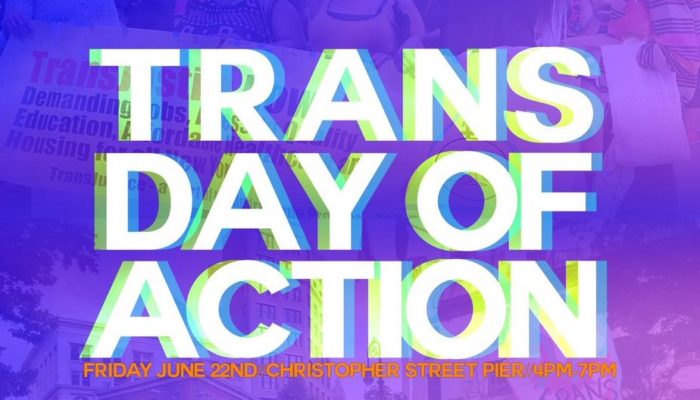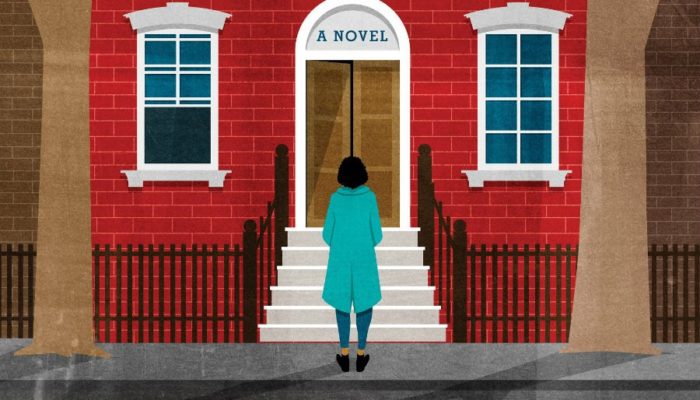by Alexandra Watson, Editor-in-Chief
As a mixed-race graduate student at Columbia living in Hamilton Heights, a neighborhood in Harlem destined for “urban renewal,” my relationship to the word gentrification is ambivalent. As a child, I associated the word “gentrification” solely with white people—I thought it referred specifically and only to the moving of white people into a neighborhood. In popular usage, among my peers and members of my family both black and white, this seems to be the way the word has come to be understood, despite the fact that the word’s real definition refers solely to class and property—“the buying and renovation of stores and houses in deteriorated urban neighborhoods.” The word has taken on a negative connotation, oftentimes rightfully so—gentrification strips a neighborhood of its history, it drives out long-term residents, it either appropriates or overruns culture.
The historic Hamilton Heights neighborhood is a microcosm of the trend of changing demographics throughout northern Manhattan. Hamilton
Heights extends from Riverside Drive to Edgecombe Ave, between West 133rd and West 155th St. The area is bordered by Manhattanville to the south and Washington Heights to the north, and it encompasses the Sugar Hill neighborhood (home to the Sugar Hill Gang). It’s an area traditionally known for a substantial black professional class—including Supreme Court Justice Thurgood Marshall, the novelist Ralph Ellison and jazz legends such as Charlie Parker and Count Basie. But the neighborhood experienced some setbacks during the ’80s and ‘90s, as crime surged and property lost its value.
Revival Row Houses on St. Nicholas Ave. in the Sugar Hill neighborhood of Hamilton Heights – Photo Credit
A 2011 New York Times article on Hamilton Heights referred to the neighborhood’s real estate development as “The Columbia Effect.” The article noted the impact of Columbia University’s expansion on the area; in particular, the population migration as current residents moved out, to be replaced by students, faculty, and University affiliates who could afford increasing rents.
My great aunt, a black woman from rural North Carolina, moved to New York City in the 1950s. She moved into a building on 151st street and Broadway, followed by her sisters and their children. Back then, rent for a two-bedroom with a living room and dining room was $100. An apartment this size was thought of as big enough for more than one family—in fact, my great aunt and my grandmother both lived in the apartment for a time with their several children.
As my great aunt’s health declined and she was no longer able to keep up the apartment or take care of herself alone, my family moved her to a rehabilitation center. I now live in her rent-stabilized apartment, paying a rent that I’ll never find again in Manhattan for a space of this size. I am a graduate student at Columbia, with a job in the service industry and a large enough budget — from federal student loans — to afford my rent and still save some money. I can also afford to patronize the newer, relatively expensive local businesses, which makes me, at least in one way, a supporter of the process of gentrification.
In my experience, the process hasn’t been all bad. I can remember a time, maybe fifteen years ago, when fights broke out frequently in front of my great aunt’s building; when drug addicts and alcoholics hung out around the corner; when it seemed no women walked alone; when the only open businesses were liquor stores and pawn shops. The neighborhood has visibly changed since then—it’s safer for a young woman to go out alone, there are a few nice bars and restaurants. But the most noticeable change of all is the shift in demographics of the residents.
When I was younger, Hamilton Heights was majority African American, followed by Hispanics (mostly Dominican). Now Hispanics constitute a majority of the population of the neighborhood, followed by African Americans, West Indians, and Whites. But the demographics seem to be shifting faster than any census can keep up. Every month I witness more “young urban professionals” moving in. Whenever I’ve seen an older family or individual moving out of my building, the management has quickly renovated the apartment and a younger (usually white) person or group moves in.
When I speak to younger white patrons at the bar where I work in Hamilton Heights, I find that most of them have moved to the neighborhood within the past 3 years—and the majority within the past year. Even ten years ago, I specifically recall noticing that there were no white people to be seen. As a very light-skinned black woman who is often mistaken for Mediterranean or Latina, I always noticed when I was the lightest skinned person around—and in Harlem, this was almost always the case. Now it never is. I feel ambivalent about this—while the neighborhood is actually more diverse than it used to be, I wonder if it comes at the cost of diluting some of the neighborhood’s cultural relevance. Will younger residents uphold the neighborhood’s value of jazz, black culture and literature? Will the use of Spanish be marginalized in shops and other establishments?
People have a right and a reason to be skeptical of residential shifts and urban planning. After all, the people who benefit most from this type of shift are the real estate developers, whose main incentives are financial. But I give a little more credit to the recent and future residents of Hamilton Heights. I’ve met actors, artists, teachers, social workers, campaign administrators, and other varied professionals of all colors who came from elsewhere and are enriching the neighborhood. At my job, I consistently hear stories about how the neighborhood has gotten nicer, often from older black customers who speak positively about the introduction of diversity into the neighborhood: not just of whites, but of people from countries around the world. The age demographics have also shifted: many more people my age – in their early and mid-20s. One of my favorite parts about my job is seeing unexpected friendships forming over food and drink: the elderly black woman who’s been living in the neighborhood for forty years talking and laughing with a young mixed-race couple who’ve just moved in.
But combined with this are instances of misunderstanding and generalizations about the cultures of Harlem. One patron, a young white woman who’d recently moved into the neighborhood, told me she liked it alright, but she’d never experienced so much harassment from men in her life. I laughed and tried to explain that, while, yes, catcalls are prevalent and can often border on the obscene, much of what she considered “harassment” may just have been instances of a custom unfamiliar to her—of men greeting women, both those they find attractive and those they don’t—a custom I find to be more common in black and Hispanic communities. If you engage with the community, you learn that saying good morning to the man who greets you on the street every day will not necessarily get you into any trouble—and you also learn the people and corners to avoid.
I’ve witnessed many positive sides to gentrification. In Hamilton Heights, it has helped local businesses, provided jobs for existing residents, improved public projects and public spaces, and decreased crime. When manipulated to good effect, it can help create cultural and communal spaces to preserve the rich history of Harlem and to empower the people whose families have lived here for decades. A good example is Friendship Garden on 150th Street between Broadway and Amsterdam: a part of the New York Restoration project, Friendship Garden is a community project that offers public hours and grows fruits and vegetables for local vendors and the Manhattan Food Pantry.
To maximize the positive effects of gentrification is to take ownership over the area’s change. We should harness its powers to create change from within rather than from outside, with the support of new community members who value the neighborhood’s history and culture.
We can’t trust or rely on any institution to do this work. Columbia’s Manhattanville project—a $7 billion development project on a 17-acre site consisting primarily of the blocks from 129th to 133rd Streets between Broadway and 12th Avenue— includes construction of a new home for the University’s Business School, School of the Arts, and other academic buildings. The Manhattanville Project guarantees that the neighborhood will continue to see rapid change. The question remains whether these changes will be for the better or for the worse, and for whom. The university claims the project will create 6,000 permanent jobs, and that the presence of the Columbia community will benefit local restaurants and businesses. The university actually signed a community benefits agreement, requiring 25 percent participation in the construction by minorities, women, and local businesses, and requiring 35 percent of non-construction contracts go to minority, women and locally owned firms. But it’s yet to be determined whether these obligations will be met, and to a quality standard of reasonable wages. Given Columbia’s past performance I remain skeptical. After all, Columbia has a questionable track record with supporting low-paid and minority workers.
Rendering of 3595 Broadway, Columbia’s new construction on 148th & Broadway – Photo Credit
If I walk from Columbia to my apartment, I pass two construction sites, both under the Columbia name: one is the Manhattanville campus, and the other is a little further up, on 148th and Broadway—a site where Columbia plans to construct a new 12-story building containing affordable housing apartments. The purpose of this housing complex? To provide “affordable housing units for some residents currently living in the area of Manhattanville in West Harlem where the University is building a new campus.” The University is surprisingly transparent about its plans for displacement and resettlement.
All in all, I’m not completely comfortable with the way this neighborhood has changed, or with the fact that some people will undoubtedly not be able to keep up with the rents as apartments are renovated and prices are jacked up to meet the rising demand. What is clear is that, at this stage, gentrification is inevitable—and that if the community works together, we can actually use this process to our advantage. One way to do this is by encouraging the young, educated new residents to engage with the history and culture of our neighborhood and to invest in development with the interests of long-term residents in mind.
//





